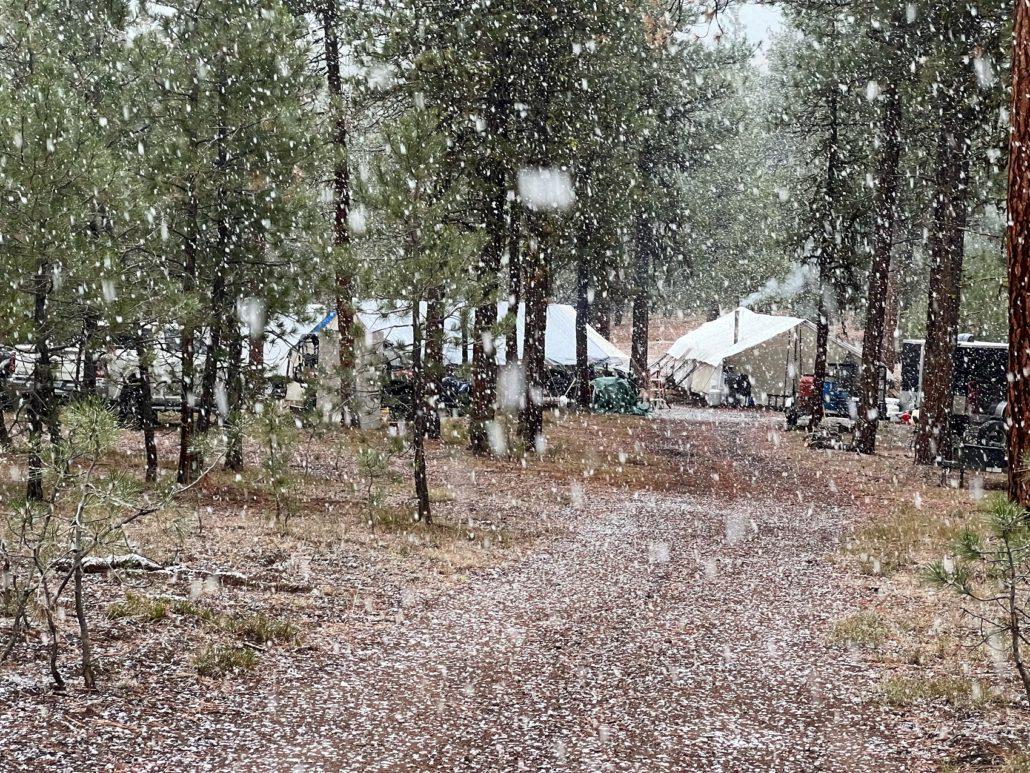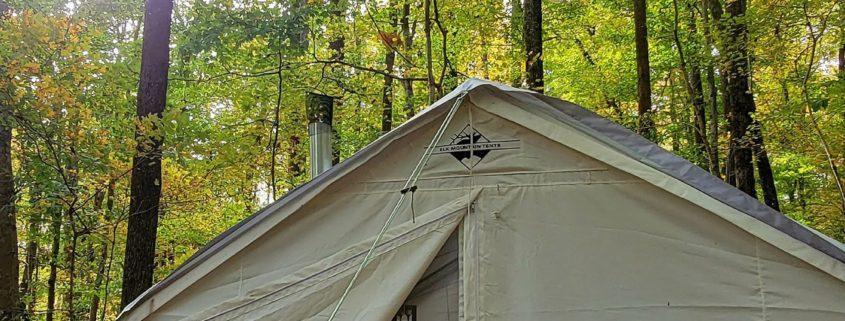Canvas Tent Stoves: Your Ultimate Guide to Reliable Heat and Cooking in the Great Outdoors.
A canvas tent stove is a portable heating system specifically designed for camping or outdoor activities. It is made of durable and heat-resistant materials and is usually placed inside a canvas tent to keep the occupants warm and comfortable during cold nights. In this article, we will provide you with all the necessary information about canvas tent stoves, including their features, benefits, and how to use them.
Features of a Canvas Tent Stove
Canvas wall tent with stoves come in various shapes and sizes, but they all share some common features. Here are the most important ones:
- Heat-resistant materials: The stove is made of materials that can withstand high temperatures without degrading, such as cast iron or steel.
- Ventilation: The stove has a chimney or flue that allows smoke and exhaust gases to escape from the tent. Proper ventilation is crucial for safety and comfort.
- Airflow control: The stove has dampers that control the amount of air that enters and exits the combustion chamber, which affects the heat output and burn rate.
- Fuel source: The stove can burn different types of fuel, such as wood, coal, pellets, or propane. Some stoves are multi-fuel, which means they can burn more than one type of fuel.
Benefits of a Canvas Tent Stove
Using a canvas tent stove has many benefits, especially for camping or outdoor enthusiasts. Here are some of the most important ones:
- Warmth: A canvas tent stove can provide reliable and consistent heat, even in extremely cold temperatures. It can also help to dry out damp clothes or gear.
- Comfort: A canvas tent stove can make camping more comfortable and enjoyable, as it creates a cozy and inviting atmosphere. It can also be used for cooking or boiling water, which adds to the camping experience.
- Versatility: A canvas tent stove can be used in different settings and situations, such as hunting, fishing, or emergency preparedness. It is also easy to transport and set up, as it can be disassembled and packed into a small space.
- Safety: A canvas tent stove is a safe and efficient way to heat a tent, as long as it is used properly and with caution. It reduces the risk of carbon monoxide poisoning or fire hazards associated with other heating methods, such as propane heaters or candles.
How to Use a Canvas Tent Stove
Using a canvas tent stove requires some basic knowledge and skills, but it is not difficult to learn. Here are the steps to follow:
- Choose a suitable location: The stove should be placed on a flat, stable surface that is not flammable or too close to the tent walls. It should also be positioned near a ventilation opening, such as a window or a vent.
- Prepare the fuel: Depending on the type of stove and fuel, you may need to split, chop, or gather wood, or refill the propane tank. Make sure to have enough fuel for the duration of your camping trip.
- Start the fire: Open the damper and light the kindling or starter fuel. Gradually add more fuel, adjusting the airflow as needed to control the burn rate and temperature. Do not overfill the stove or leave it unattended.
- Monitor the stove: Keep an eye on the stove and the chimney to ensure proper ventilation and prevent any blockages or backdrafts. Avoid touching the stove or the chimney when they are hot.
- Extinguish the fire: Before going to bed or leaving the tent, make sure to fully extinguish the fire and close the damper. Remove any ashes or debris from the stove and the chimney.

FAQs about Canvas Tent Stoves
Q: What is the best type of fuel for a canvas tent stove?
A: The best type of fuel for a canvas tent stove depends on several factors, such as the stove’s design, the availability of fuel, and the desired heat output. Wood is the most common and traditional fuel for canvas tent stoves, as it is readily available in most camping areas and provides a pleasant aroma and ambiance. However, wood requires more effort to collect, split, and store than other fuels, and may produce more smoke and ash. Pellets or coal can be used as alternatives to wood, as they burn more efficiently and produce less waste, but may require a specialized stove or accessories. Propane or gas stoves are another option for those who prefer convenience and portability, but they require a constant supply of fuel and may not be suitable for long-term camping.
Q: How do I choose the right size of canvas tent stove?
A: The size of the canvas tent stove depends on several factors, such as the size of the tent, the number of occupants, the outside temperature, and the desired heat output. A stove that is too small may not provide enough heat, while a stove that is too large may generate too much heat and consume too much fuel. As a general rule, the stove’s heat output should match the tent’s cubic feet capacity, which can be calculated by multiplying the tent’s length, width, and height. However, other factors such as the insulation, ventilation, and wind exposure of the tent may also affect the stove’s performance.
Q: Can I use a canvas tent stove for cooking?
A: Yes, a canvas tent stove can be used for cooking or boiling water, as long as it has a cooktop or a flat surface that can support a pot or a pan. Some canvas tent stoves come with accessories such as grills, ovens, or water heaters, which can enhance the cooking experience. However, cooking on a canvas tent stove requires some caution and attention, as the stove may get very hot and the cookware may get damaged or cause a fire if not placed properly. It is also important to avoid spilling food or grease on the stove or the chimney, as it may create smoke or odors.
Q: How do I maintain and clean my canvas tent stove?
A: To maintain and clean your canvas tent stove, you should follow the manufacturer’s instructions and use the appropriate tools and materials. Some general tips include:
- Regularly inspecting the stove for cracks, rust, or damage, and replacing or repairing any parts as needed.
- Removing any ashes, debris, or creosote from the stove and the chimney after each use, using a shovel, a brush, or a scraper.
- Lubricating any moving parts or hinges with oil or grease to prevent rust or stiffness.
- Storing the stove and its accessories in a dry and ventilated place, away from moisture, rodents, or other pests.
- Consulting a professional if you encounter any technical or safety issues with your canvas tent stove.
Elkmountaintents and Canvas Tent Stoves
Elkmountaintents is a company that specializes in canvas tents and accessories, including canvas tent stoves. Their canvas tent stoves are made of high-quality materials and designed to provide reliable and efficient heat for camping and outdoor activities. Some of their canvas tent stoves include:
- The Elk Mountain Tent Stove: This stove is made of heavy-duty steel and features a top-loading design, a built-in damper, and a cooktop surface. It can burn wood, coal, or pellets, and has a heat output of up to 75,000 BTUs. It is suitable for large canvas tents or cabins.
- The Little Bugger Tent Stove: This stove is made of cast iron and has a compact and lightweight design, making it easy to carry and set up.





